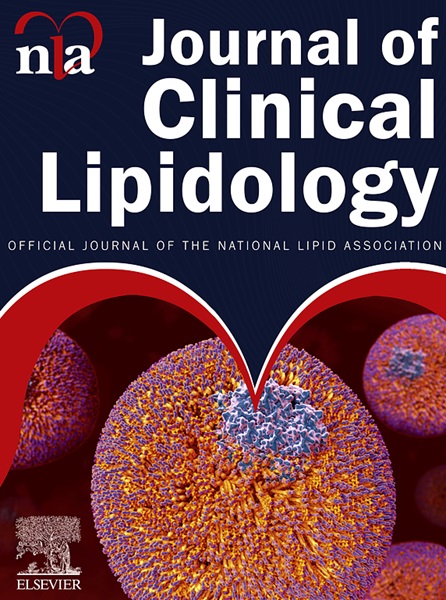纯合子家族性高胆固醇血症患者长期使用洛米他胺治疗的经验:超过10年的疗效和安全性数据
IF 4.6
3区 医学
Q2 PHARMACOLOGY & PHARMACY
引用次数: 0
摘要
背景:纯合子家族性高胆固醇血症(HoFH)是一种罕见的疾病,其特征是低密度脂蛋白受体(LDLR)功能丧失,出生时循环低密度脂蛋白胆固醇(LDL-C)极度升高,如果不治疗,预期寿命大幅降低。HoFH患者通常诊断较晚,且发生早发动脉粥样硬化性心血管疾病(ASCVD)的风险显著升高。资料来源:目前欧洲动脉粥样硬化学会关于治疗HoFH的共识声明推荐LDL-C目标为:研究摘要:洛米他胺是微粒体甘油三酯转移蛋白的小分子抑制剂。由于lomitapide可减少载脂蛋白b的产生,其作用机制与LDLR无关。本综述总结了关于使用洛米他胺治疗HoFH患者的现有证据。结论:在过去的十年中,大量的临床试验、真实世界证据研究和案例研究/系列研究调查了洛米他胺降低ldl - c的功效/有效性和安全性。对于不能接受低密度脂蛋白依赖治疗(如他汀类药物、依折麦贝和PCSK9i)的HoFH患者,洛米他啶是降低LDL-C的有效治疗选择。本文章由计算机程序翻译,如有差异,请以英文原文为准。
Long-term experience with lomitapide treatment in patients with homozygous familial hypercholesterolemia: Over 10 years of efficacy and safety data
BACKGROUND
Homozygous familial hypercholesterolemia (HoFH) is a rare disease characterized by loss of low-density lipoprotein receptor (LDLR) function, an extreme elevation of circulating low-density lipoprotein cholesterol (LDL-C) from birth and substantially reduced life expectancy, if untreated. Patients with HoFH are frequently diagnosed late and have a markedly elevated risk of premature atherosclerotic cardiovascular disease (ASCVD).
SOURCES OF MATERIAL
The current European Atherosclerosis Society consensus statement on the treatment of HoFH recommends an LDL-C goal of <55 mg/dL for adults with ASCVD or major ASCVD risk factors, <70 mg/dL for adults without ASCVD risk factors, and <115 mg/dL for pediatric patients without ASCVD. However, achieving these targets is challenging, necessitating treatment with multiple lipid-lowering therapies in combination, including statins, ezetimibe, and other treatments such as lipoprotein apheresis, proprotein convertase subtilisin/kexin type 9 inhibitors (PCSK9i), lomitapide, and evinacumab.
ABSTRACT OF FINDINGS
Lomitapide is a small molecule inhibitor of microsomal triglyceride transfer protein. As lomitapide reduces the production of apolipoprotein B-containing lipoproteins, its mechanism of action is independent of LDLR. The present review summarizes the available evidence regarding the use of lomitapide for the treatment of patients with HoFH.
CONCLUSIONS
Over the last decade, numerous clinical trials, real-world evidence studies, and case studies/series have investigated the LDL-C-lowering efficacy/effectiveness and safety of lomitapide. Lomitapide is an effective treatment option for lowering LDL-C in patients with HoFH who are refractory to LDLR-dependent therapies, such as statins, ezetimibe, and PCSK9i.
求助全文
通过发布文献求助,成功后即可免费获取论文全文。
去求助
来源期刊
CiteScore
7.00
自引率
6.80%
发文量
209
审稿时长
49 days
期刊介绍:
Because the scope of clinical lipidology is broad, the topics addressed by the Journal are equally diverse. Typical articles explore lipidology as it is practiced in the treatment setting, recent developments in pharmacological research, reports of treatment and trials, case studies, the impact of lifestyle modification, and similar academic material of interest to the practitioner.
Sections of Journal of clinical lipidology will address pioneering studies and the clinicians who conduct them, case studies, ethical standards and conduct, professional guidance such as ATP and NCEP, editorial commentary, letters from readers, National Lipid Association (NLA) news and upcoming event information, as well as abstracts from the NLA annual scientific sessions and the scientific forums held by its chapters, when appropriate.

 求助内容:
求助内容: 应助结果提醒方式:
应助结果提醒方式:


